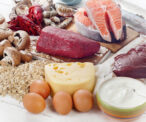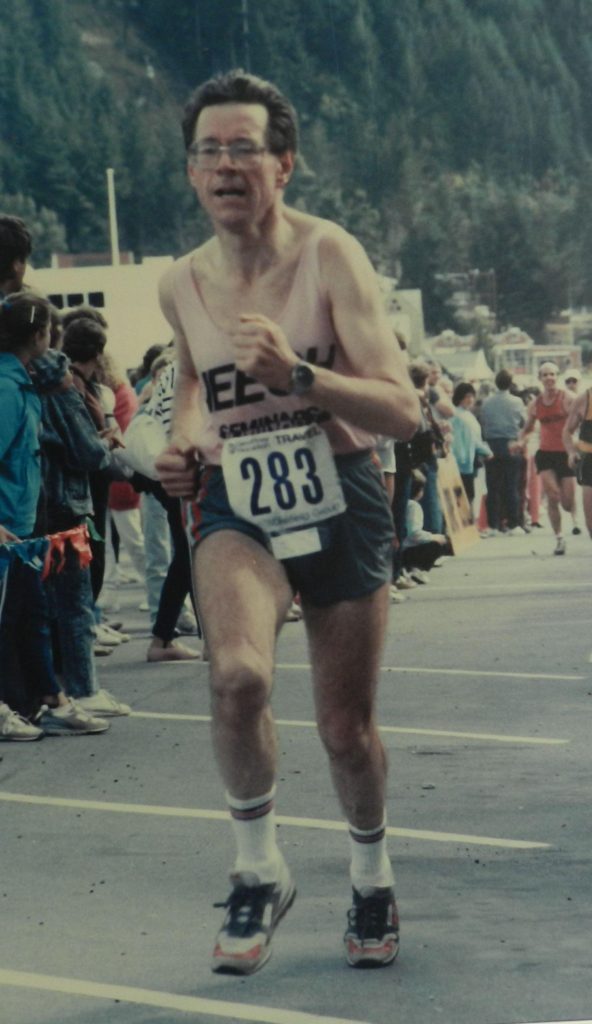
Thirty years ago, I was running marathons. Our lives change, in this part of my life I needed to focus excessively on exercise, I was trying to get my life in order.
Today, I’m 80 years old, and my aim is to keep dancing, or perhaps to keep tramping, or to attend Tai Chi classes. I want to be active and strong.
In this post I’ll explain some of the things I do to keep myself fit, and to help myself recover from a recent heart (angina) attack. The key thing is to start where you are, and to quietly improve.
Walking
Join a walking group. The social side of walking is important. However, so is your ability to walk at pace and to climb stairs or walk-up hills. To do that, as the group you are in gets older and slower, you really need to make sure that you find a friend who sees the benefit of putting in extra effort.
Six Minute Walking Speed Test: This is a standard test which is commonly used for older people in a hospital rehabilitation setting. You need a quality surface, and the distance should be marked perhaps every 50 metres. Use a watch, or Tabata app on your phone. With Tabata set it up to run 6 one-minute work sessions one after the other. The standard is to walk 600 meters in 6 minutes. But your score, in metres, is what you can do today, write the number in a diary or health journal. In a month’s time see if you can do better.
Tools to help measure progress
Fitify or some other Exercise App.: There are many fitness apps on the market. They vary greatly in quality. There is great value in going to the gym in the beginning, but most people don’t keep that up. The quality of the advice you get at the gym varies greatly too. Fitify gives you structured exercises usually repeated for only 20 or 30 seconds. There is a lot of variety. If you have barbells, dumbbells, straps, or an exercise ball that can be incorporated into the program. I’m paying about NZ$80 a year for this app.
Tabata: Tabata is a free app. You can set the timing in minutes and seconds, for preparation, work, and rest. This is excellent to help you measure your exercise effort in a low-cost way. My first use of Tabata was 30 seconds of work followed by 6 seconds rest. Repeat as often as needed, eg 8 times, like this.
30 sec static push
30 sec static pull
30 sec deep squat and hold
30 sec hamstring stretch (Left)
30 sec hamstring stretch (Right)
30 sec wide leg bend
30 sec sprinters calf stretch (Left)
30 sec sprinters calf stretch (Right)
In my post angina attack recovery, I was warned that I shouldn’t run, because it might be dangerous, but I felt that I needed to do some running to maintain fitness. I used Tabata in this way. Walk 30 seconds, brisk walk 30 seconds, jog 30 seconds, rest 10 seconds. (Evaluate how you are feeling.) Walk two minutes, run 30 seconds, and repeat 10 times. Insert 10 second rests if you wish. I soon found without any signs of stress, that I could increase the jog times. This is very controllable and safe, that’s why I didn’t change the 2-minute walk, making sure I was back to normal, before starting to run again.
30-15 Intermittent Fitness Test: Designed by Martin Buchheit. The app for this is available free on the Internet. “The 30-15 IFT is an incremental, intermittent running test designed to improve run-based high-intensity interval training (HIIT) prescription.” You need to download the App, and to mark with paint the distances on the path you choose to use.
The track I marked is 100 metres long, I made a 20 metre string with a loop at each end, and a knot 3 metres from each loop. Paint a short line at the loop, three dots at the 3 metre marks, and repeat 5 times.
I’ve found this very useful, when I was struggling to run at all, I could run for 30 seconds. If needed, you could walk it. You can build from there.
Join a Gym, Dance Group, or Cycling Group: Social connection to other people is important. Other people like yourself, but who are also interested in keeping their skills, strength and stamina up.
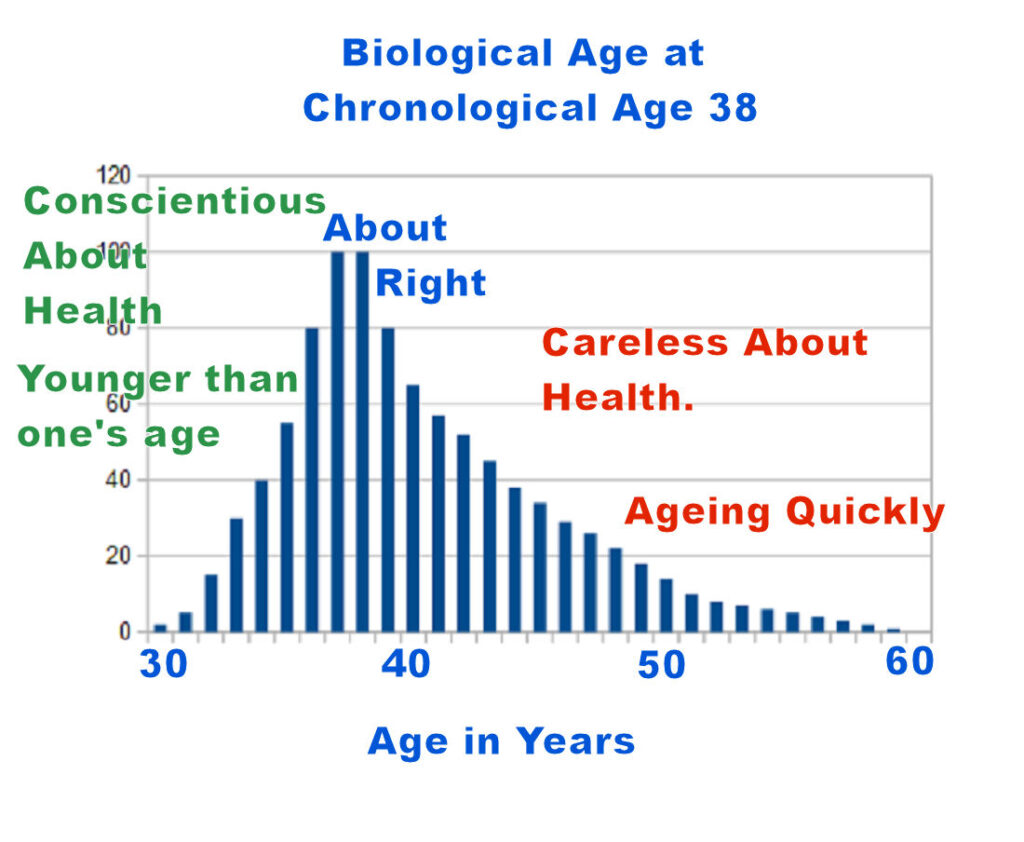
An Australian study reports, “Just 40% of Australian adults who aged 55–74 years achieve the recommended amount of physical activity each week, and after 75 years, the proportion falls to 24%; however, identifying physical activities that are enjoyable and accessible for older people can be challenging. Many older adults prefer to exercise alone or with others of their own age, and more than half of older Australians undertake their physical activity in unstructured forms such as walking to local shops.” That information and the graph above tell the same story, we can easily do better.
First of all, you need to get your diet right. If you are more than 10 kg overweight, choose cycling or swimming rather than walking and running for your exercise. Combine that with Tai Chi or Yoga, or body weight floor exercises.
In the Australian study above, “Joy, Exercise, Enjoyment, Getting out: A Qualitative Study of Older People’s Experience of Cycling in Sydney, Australia” by Alexis Zander, and others, they found significant health benefits with just three 30 minutes cycling sessions a week, without trying to engage in heavy effort.
In the UK, there is a cycling club for older experienced cyclists. To qualify for membership, you need to be able to cycle 80 km on a single ride and do that in a pretty quick time. I can’t find the report now, but the group had a mean age of 70, and the fitness level of average 35 year olds. Just think about how that level of strength, and endurance must boost your confidence and enjoyment of life.
I’m no athlete these days, but I have been exercising. Using Fitify, 3 or 4 days a week. Dancing in three sessions 5 hours a week. Doing one long walk or cycle ride a week. Occasionally a bit of running. The Norwegian University of Science and Technology, have published a fitness assessment. at World Fitness Level dot Org. You can enter your own data.
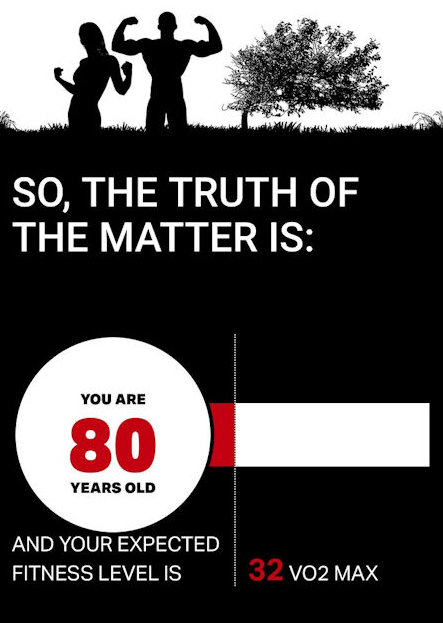
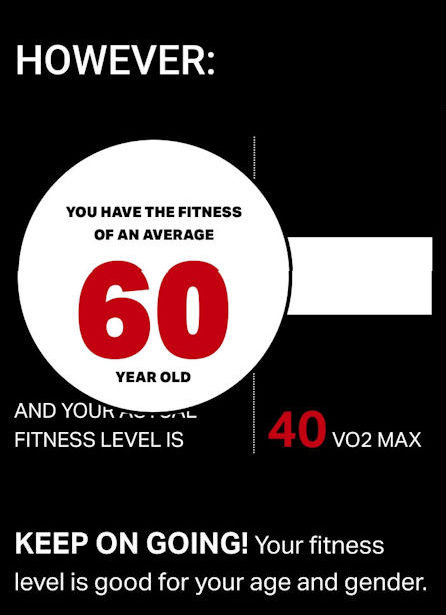
If you want a test of your functional ability designed for people who have movement and control issues, this test downloads as a spreadsheet, and allows you to assess your ability in your own way.
Personal Health Assessment for Seniors.
I hope the information above is useful to you all.
